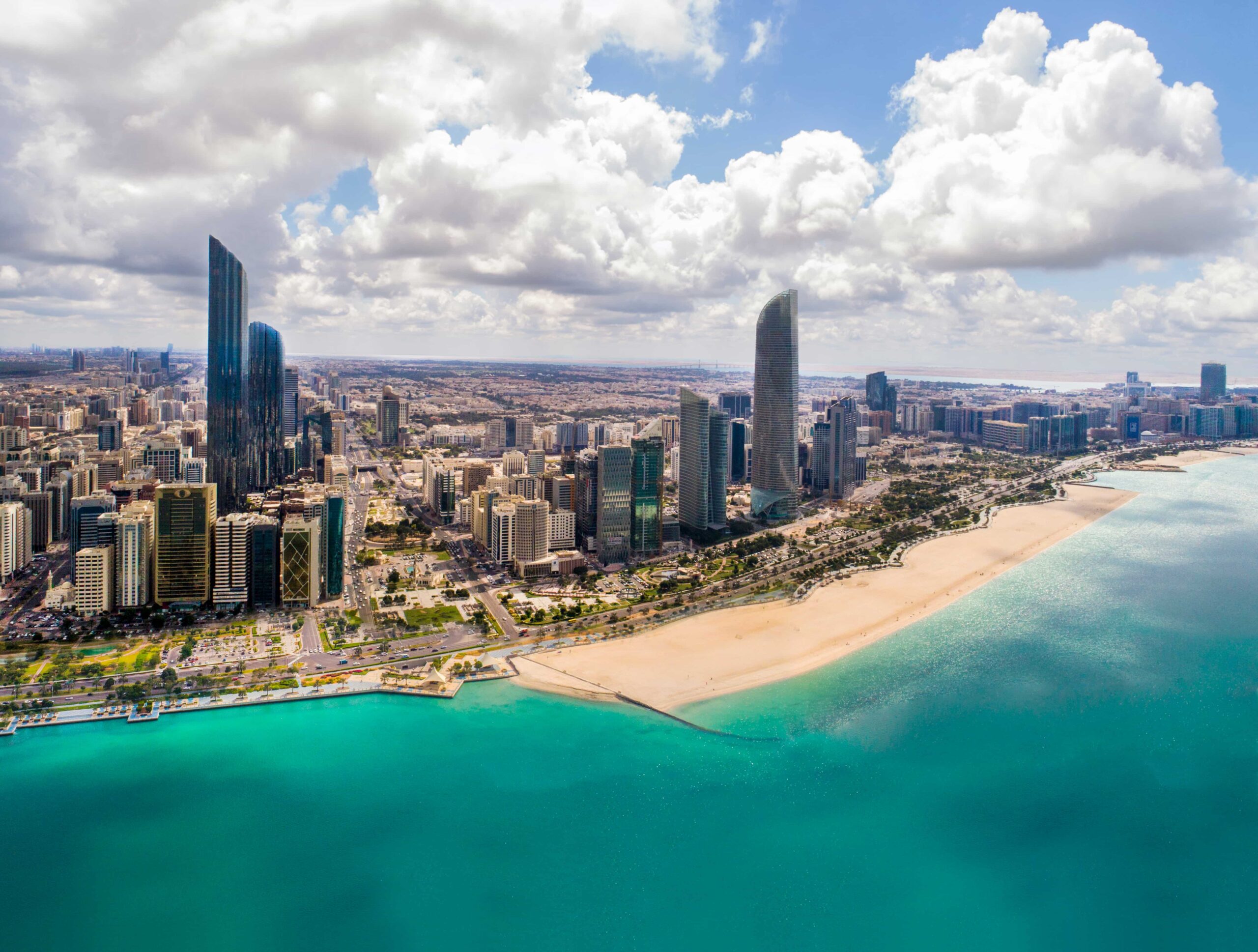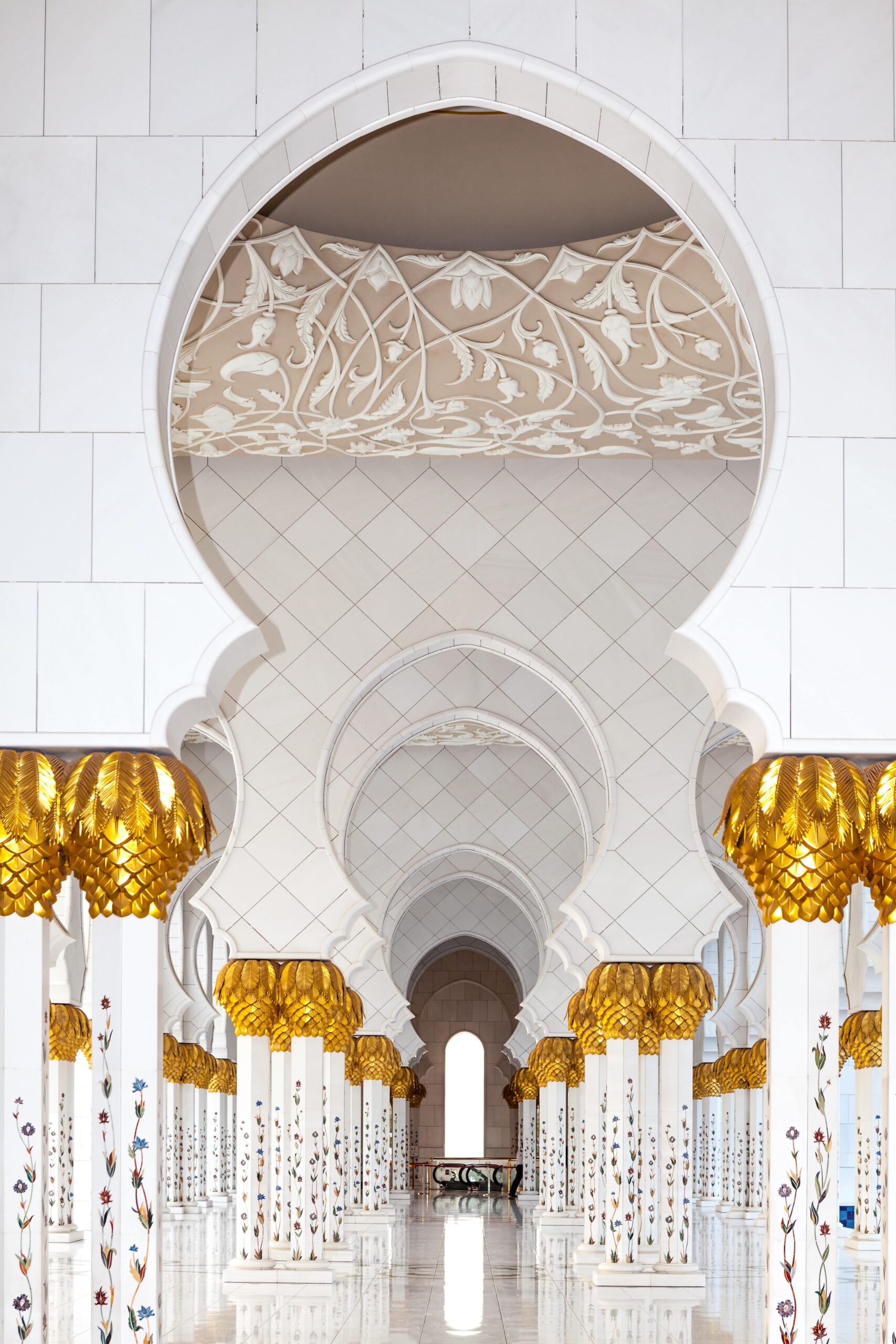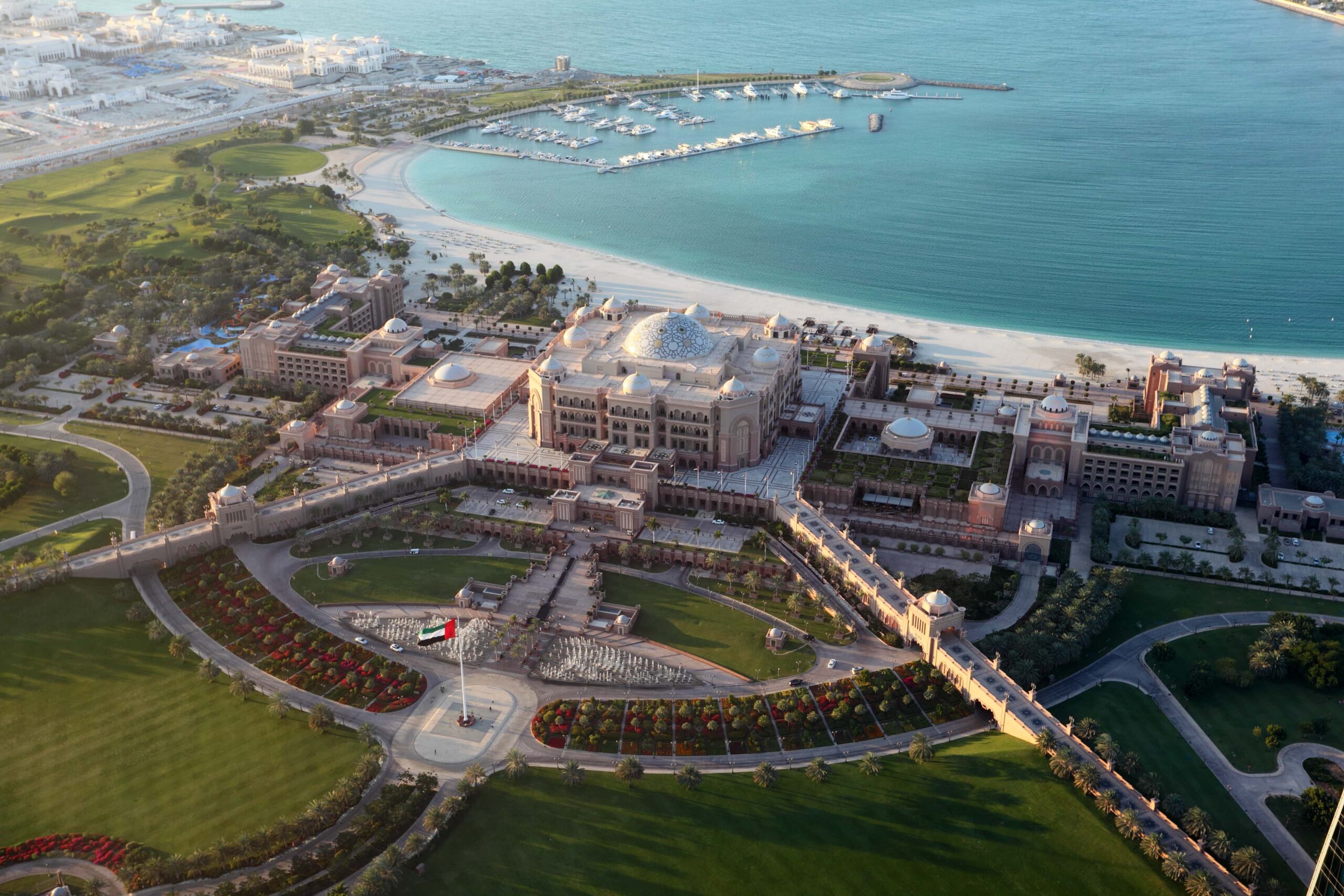Abu Dhabi – Your Land of Wonders and Welcome
Read
Abu Dhabi, the capital of the UAE, does have a reputation of being a business city, though the city does boast a number of unique activities for tourists and residents alike. The name means ‘Land of the Gazelle’ in Arabic, and was originally a small island settlement, containing no more than 300 palm huts, a few coral buildings, and the Rule’s fort. This settlement has grown into a cosmopolitan city and the capital of the UAE. The capital is full of modern architecture, historic mosques, shopping centres, theme parks, and natural enclaves that display the country’s diverse flora and fauna. Apart from containing ultra-modern pleasures, like Ferrari World or the Marina Mall, the city is also a wonderful place to learn about the nation’s culture and history, from learning about falconry to walking traditional streets in Heritage village. Outdoor enthusiasts will enjoy a visit to the capital and exploring the Corniche Beach, or the Empty Quarter Desert.

Sheikh Zayed Grand Mosque
The Sheikh Zayed Grand Mosque, one of the largest mosques in the world, is a must-visit in the capital. Completed in 2007, this mosque can fit approximately 40,000 visitors, and is as large as four football fields. The architecture alone is worth the visit – the architects were Emirati, Italian, and British, bringing elements of design from across the region, with the mosque having Turkish, Moroccan, Egyptian elements and more. The mosque contains 82 domes, over one thousand columns, and features a white and gold façade. This mosque is open to non-Muslim visitors as well, and is free to enter, inviting visitors to walk across the world’s largest hand-woven rug, or admire the one of the world’s largest chandeliers while appreciating the fusion of different architectural styles, representing Islam’s diverse history.

Though you are able to explore the mosque on your own, first-time visitors are recommended to take along on a guided tour (which are also free of cost), and tours take between 45 minutes to an hour. The tours take you around the mosque, with guides pointing to the engineering, art, and workmanship that went into the mosque’s construction. Open from 9 am to 10pm through the week, and open from 5 pm to 11pm on Fridays, a recommended time to visit the mosque is during sunset, when the sun’s last rays reflect off the marble courtyard, making the mosque glitter in the sunlight.
Emirates Palace

This resort, akin to the Burj Al Arab in Dubai, sets the bar for luxury living in Abu Dhabi. The clientele for the resort ranges from guests looking for the ultimate luxurious experience, to visiting royals and dignitaries. Spread over 250 acres near the Corniche, the resort features more than 100 domes, containing over a thousand chandeliers and rich carpets that add to the opulence of the resort, while the gardens outside the hotel are lush and filled with palm trees and fountains. Another feature that’s worth seeing are the two handmade wall display carpets, each portraying the palace itself and each weighing over one tonne. The resort is open to non-guests as well, inviting all and sundry to enjoy a meal at one of the nine restaurants within the hotel, or enjoy a resplendent Turkish bath or skin treatment at the Anantara spa within the hotel. Visitors are invited to simply walk through the interiors of the hotel, which showcase Arabic design, from grand central hallways to stunning arched ceilings. The resort is particularly stunning at night, with the hotel’s lighting constantly shifting to feature a changing effect over the main dome.
The Corniche
The Corniche is a five-mile stretch of waterfront, featuring beaches, playgrounds, art installations, and gardens for guests to walk through. The perfect time to visit the Corniche is at sunset, with the day getting cooler and the sun setting over the glittering water. The seaside is lined with some of the city’s more popular hotels, along with a variety of restaurants and shops, while the Corniche itself offers a stunning view of the city’s skyline. The most popular reason to visit the Corniche, however, is to gain access to the city’s beaches. The Corniche Beach boasts volleyball nets, cafés, and calm waters that are the perfect spot for light swims and water sports, from jet skis to parasailing. The beach is also the perfect spot for a calm picnic on sandy shores during the cooler winter months, and the Corniche promenade is open at any time for visitors to take a walk and soak in the city’s sights.
Ferrari World Abu Dhabi
Ferrari World Abu Dhabi is a massive amusement park, dedicated to Ferrari, on Yas Island, and first opened to the public in 2010. This amusement park is also home to Formula Rossa, the world’s fastest roller-coaster, and Flying Aces, the world’s tallest non-inverting loop, along with the Ferrari Driving Experience. This gives guests the chance to drive around Abu Dhabi’s streets in a real Ferrari, and the amusement park itself contains a number of simulators, go-karts, and showrooms of earlier car models. The park houses over 30 thrilling rides and attractions, and is the perfect place to visit car enthusiasts to learn more about one of most popular brands around the world.
Yas Marina Circuit
F1 fans are encouraged to visit the Yas Marina Circuit, one of the world’s best racing venues, which hosts Grand Prix and Formula 1 races. During the off-season, guests are invited to test out the track, where you have a choice of vehicles to race, from go-karts to Mercedes-Benz cars and Aston Martins. If you’re curious about the history of the track, there are many guided tours available, where guides will take you along the track, from the pit garages to media rooms, to the grandstand. If you happen to visit on the day of a race, consider sitting in for a race, with tickets available online on the Yas Marina Circuit website.
Heritage Village
Across the Dhow Harbour from the Corniche, Heritage Village is a true-to-life representation of the original fishing village that once stood on Abu Dhabi’s soil. Guests are encouraged to enter the museum and stroll past Bedouin tents, wooden huts, and workshops where there are live weaving and metal-working demonstrations for those more interested in early Emirati life. The Heritage Village is the perfect place to explore artefacts from an earlier time, or watch artisans make pottery, blow glass, or weave fabric. Run by the Emirates Heritage Club, the Heritage Village provides a glimpse into life in the UAE before urbanisation, and features public workshops where guests can learn traditional skills like metal work, pottery, weaving, and spinning. Open from 9 am to 5 pm, during the week, and from 3:30 pm to 9 pm on Fridays and free admission, this space is a must-visit to learn about the history of the UAE. There is a small spice shop within the village as well, offering a range of dried herbs and spices, along with a variety of souvenirs to take home.
Falcon Hospital
The Abu Dhabi Falcon Hospital is the world’s first hospital dedicated to the falcon, the country’s national bird. Having first opened its doors in 1999, the hospital sees approximately 6,000 birds pass through their doors each year, and the hospital currently contains over 200 air-conditioned treatment rooms for the birds. Falconry, as a sport, has deep roots in the nation’s culture, and these valuable birds are highly prized for their skills. Guided tours of the facility provide rare insights into the history of the sport and into the bird itself, along with interactions with falcons in the hospital. The falcon hospital is efficient, and includes its own lab, a pet hotel, and a hospital for other small animals, with training courses for vets, students, lab technicians, and falcon rehabilitators. Falcons from across the region are brought to this hospital, including other Gulf nations, like Saudi Arabia, Kuwait, and Bahrain. Tourists are encouraged to visit the hospital and watch medical procedures, learn more about the birds, and feed the falcons, with the hospital now being one of Abu Dhabi’s top attractions.
Palace Museum and Al Jahili Fort
Visitors who are looking to explore the emirate and move beyond the boundaries of the city can visit Al Ain, on the emirate’s eastern borders, approximately 100 miles east of the main city. One important spot to visit is the Sheikh Zayed Palace Museum, on the western edge of the Al Ain Oasis. The palace offers visitors a rare glimpse of what life was like for the founder of the nation and the UAE’s first president, Sheikh Zayed Bin Sultan al Nahyan. First built in 1910, this large complex housed the country’s President and his family, and visitors can learn more about the father of the nation as they walk through the palace’s courtyards, gardens, and bedrooms. The palace was converted to a museum in 1998, and opened its doors to visitors in 2001. The palace is worth the visit to appreciate the Bedouin style architecture, and the museum serves as a link between the past and the present.
Al Jahili Fort lies west of the Palace Museum, and was first built in the early 1800s. The fort is of historical importance as it is the largest structure in Al Ain made from mud bricks (a traditional form of Arabic architecture), and has been renovated and opened to the public. The fort was originally built to serve as a form of headquarters for the Oman Trucial Scouts, a group that was tasked with protecting the region’s palm groves, and maintaining peace between the various tribes that occupied the area. Tours of the area will include visiting the fort’s battlements and watchtowers that surround a wide courtyard. The fort today has cylindrical towers at three of its corners, with the fourth corner serving as the sheikh’s majlis, or reception area, where the sheikh would entertain guests and conduct official business. The Fort also houses a small exhibit that is dedicated to a British explorer, Sir Wilfred Thesiger, known for his journeys across the Empty Quarter Desert (known as Rub Al Khali).
Empty Quarter Desert
The Empty Quarter, or Rub Al Khali, is the largest uninterrupted sand mass in the world, and provides the perfect space for a number of desert trips and excursions. This desert spot is the perfect place to enjoy activities like dune-bashing, camel rides, sand-surfing, or safari jeep rides on the dunes. Tour companies offer a number of packages for the Empty Quarter, including balloon rides that will give you a birds-eye view of the vast desert. For guests looking to enjoy the quiet starry nights on the desert, there are resorts that sit on the Empty Quarter, offering a variety of excursion options for guests to safely explore the desert. There are a variety of camping spots as well, for guests interesting in sleeping underneath the desert sky. If you are planning a camping trip, make sure you’ve packed essential items including tents, sleeping bags, enough food, and extra clothes, as the temperatures drop once the sun sets.
The city offers a wide range of activities, excursions, and attractions for tourists and residents alike, making it a must-visit to better understand the UAE. Abu Dhabi also houses the political and government headquarters of the nation, as it is the capital, making it more vital than ever to truly understand the UAE’s place in the Middle East, and its history from being a small fishing village to a powerful nation in its own right. Growing from a few hundred settlements to housing millions of people within its borders, Abu Dhabi has earned its place as a hub for business and entertainment, offering entrepreneurs and visitors alike a glimpse into the modern-historic blend of the city. From stunning beaches to historic districts and neighbourhoods, Abu Dhabi has grown to become one of the popular places to visit, for history enthusiasts, families looking for a relaxing getaway, and those simply trying to have a good time under the sun.
This disclaimer informs readers that the views, thoughts, and opinions expressed in the text belong solely to the author, and not necessarily to the author’s employer, organization, committee or other group or individual. We take no liability for the accuracy of the information and cannot be held liable for any third-party claims or losses of any damages.